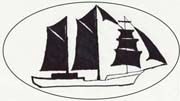
A fire claimed the lives of all but three of 472 people aboard the three-masted Cospatrick in November 1874. The ship had been sailing to Auckland, New Zealand from Gravesend, England, the majority of her passengers were immigrants.
All was well on September 11 with Captain Alexander Elmslie and his crew of 44 as the ship left Gravesend. Nearly two months of sailing also passed without incident until the early morning hours of November 17 when fire broke out as Cospatrick was nearing Africa’s Cape of Good Hope, about 400 miles southwest of the infamous storm-raged peninsula.
A cry of fire brought second mate Henry MacDonald from his bed to the deck only to witness the ensuing panic as the fire that began in the boatswain’s store quickly engulfed the ship. Captain Elmslie gave the order to turn the ship to try to get forward of the fire while several crew manning fire hoses tried desperately to douse the flames. The captain then gave the order to abandon ship but confusion and chaos reigned. Only two of the ship’s five lifeboats were launched. Three days later one boat came to an end during a storm, the other stayed afloat — drifting nearly 500 miles from where Cospatrick had succumbed to the sea — until November 27 with only five men in it when they were rescued by the British Sceptre. But even seeing rescue was too late for two of the five.
Cospatrick was an 1856-built wooden Blackwall Frigate that carried a variety of passengers, cargo and troops between England and India for Smith, Fleming & Co. of London, later ferrying immigrants and cargo to New Zealand from England after she was sold to Shaw, Savill & Co. of London.
Text source: Wikipedia under Creative Commons licence.
Photo credit: Wikipedia public domain image.
© Copyright Vince Capone 2014


